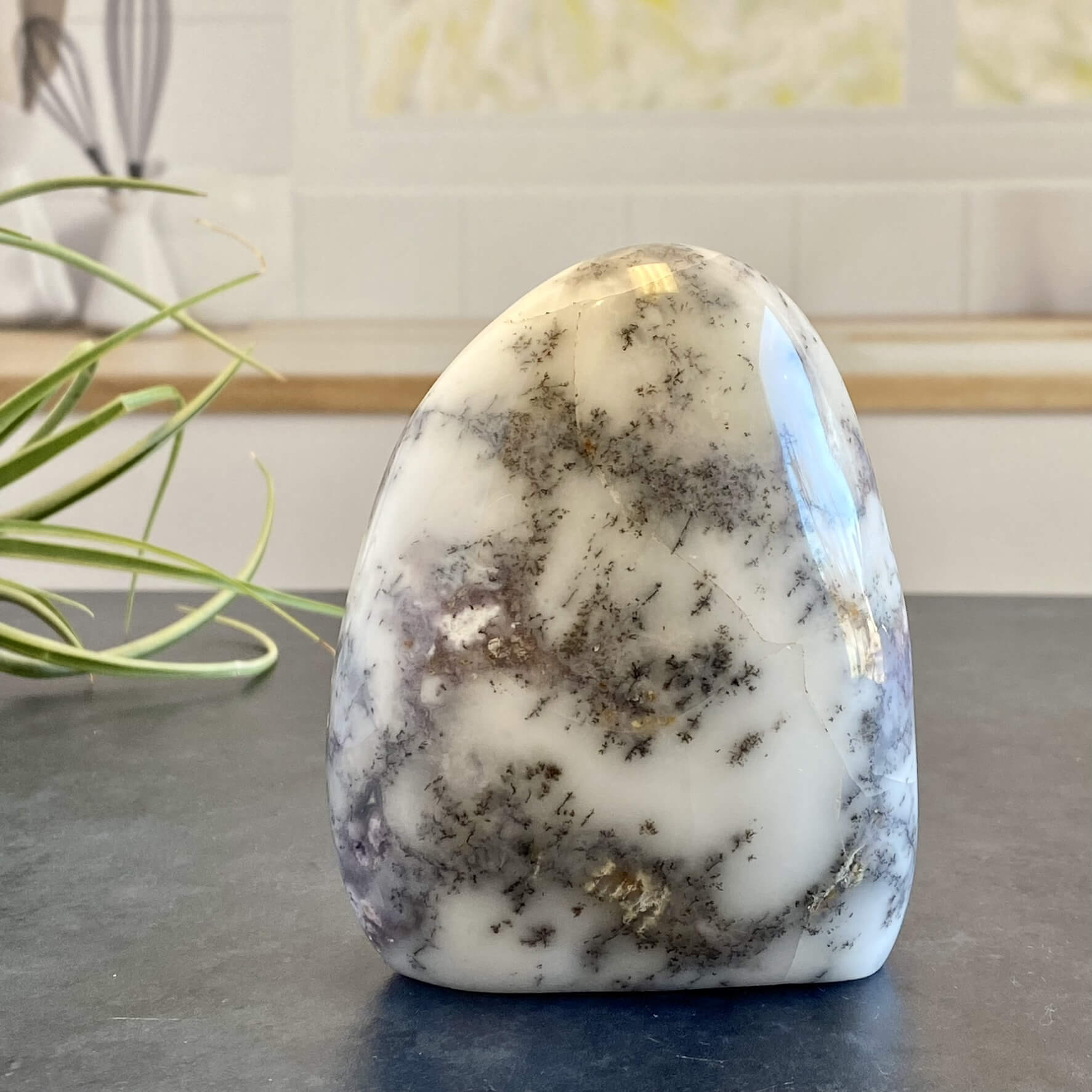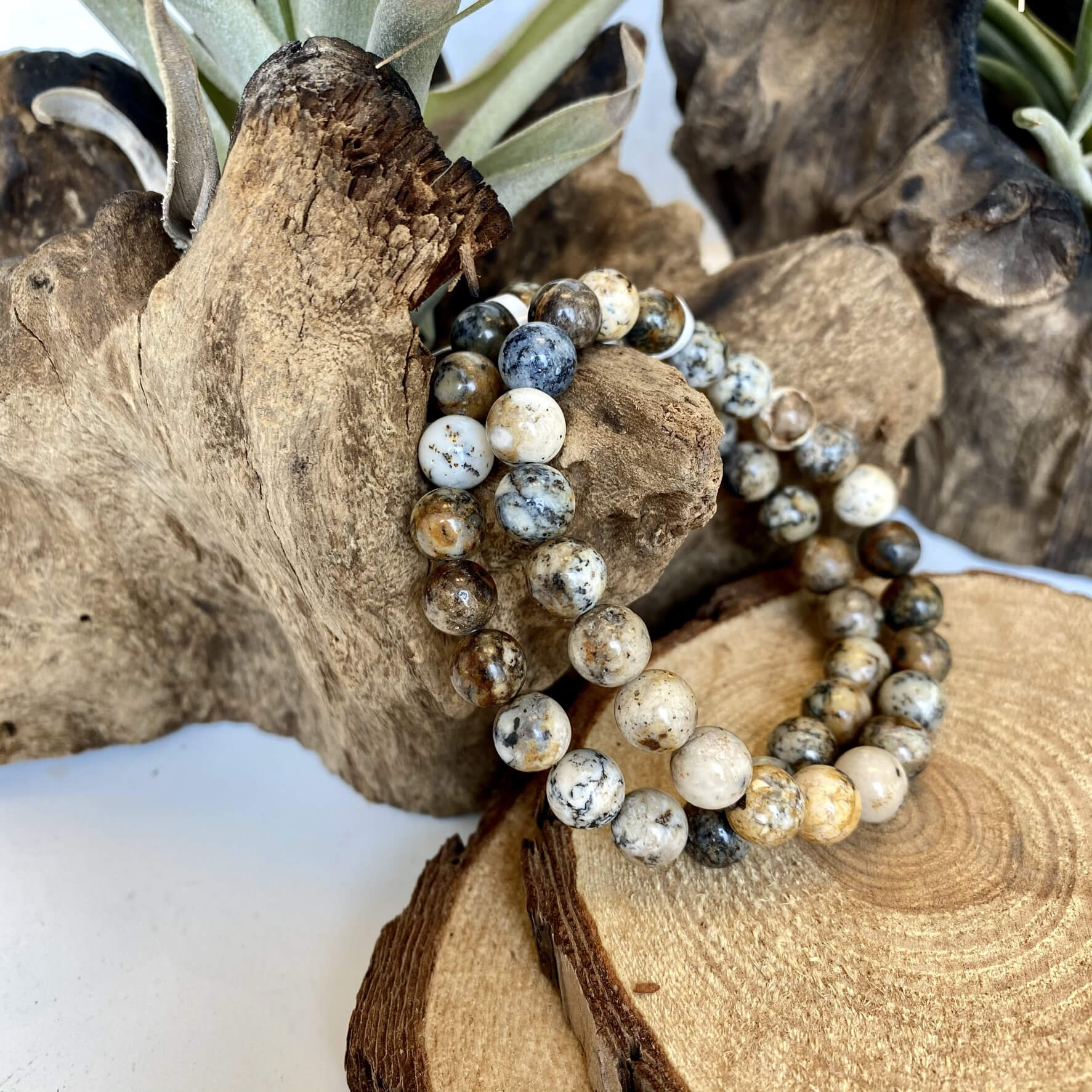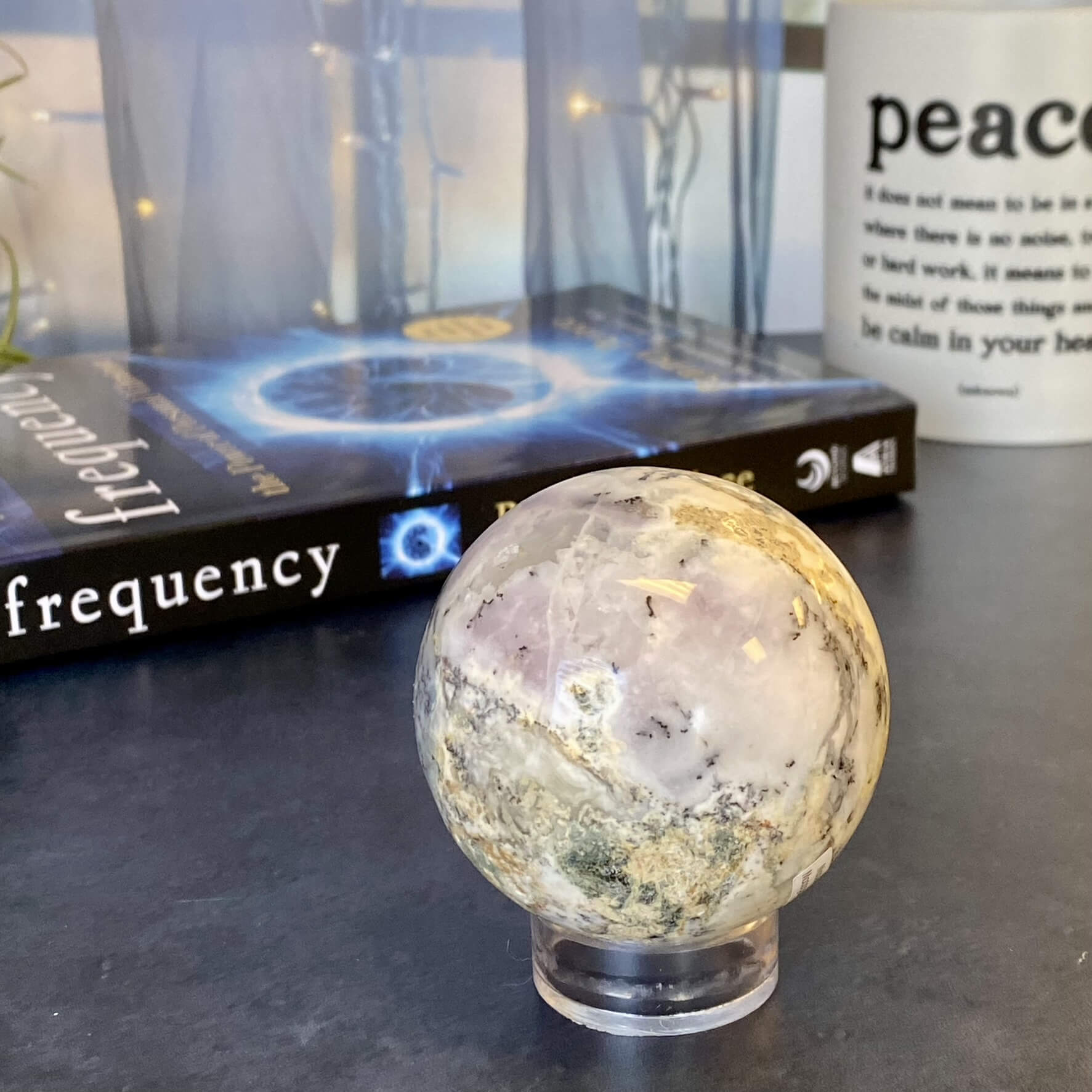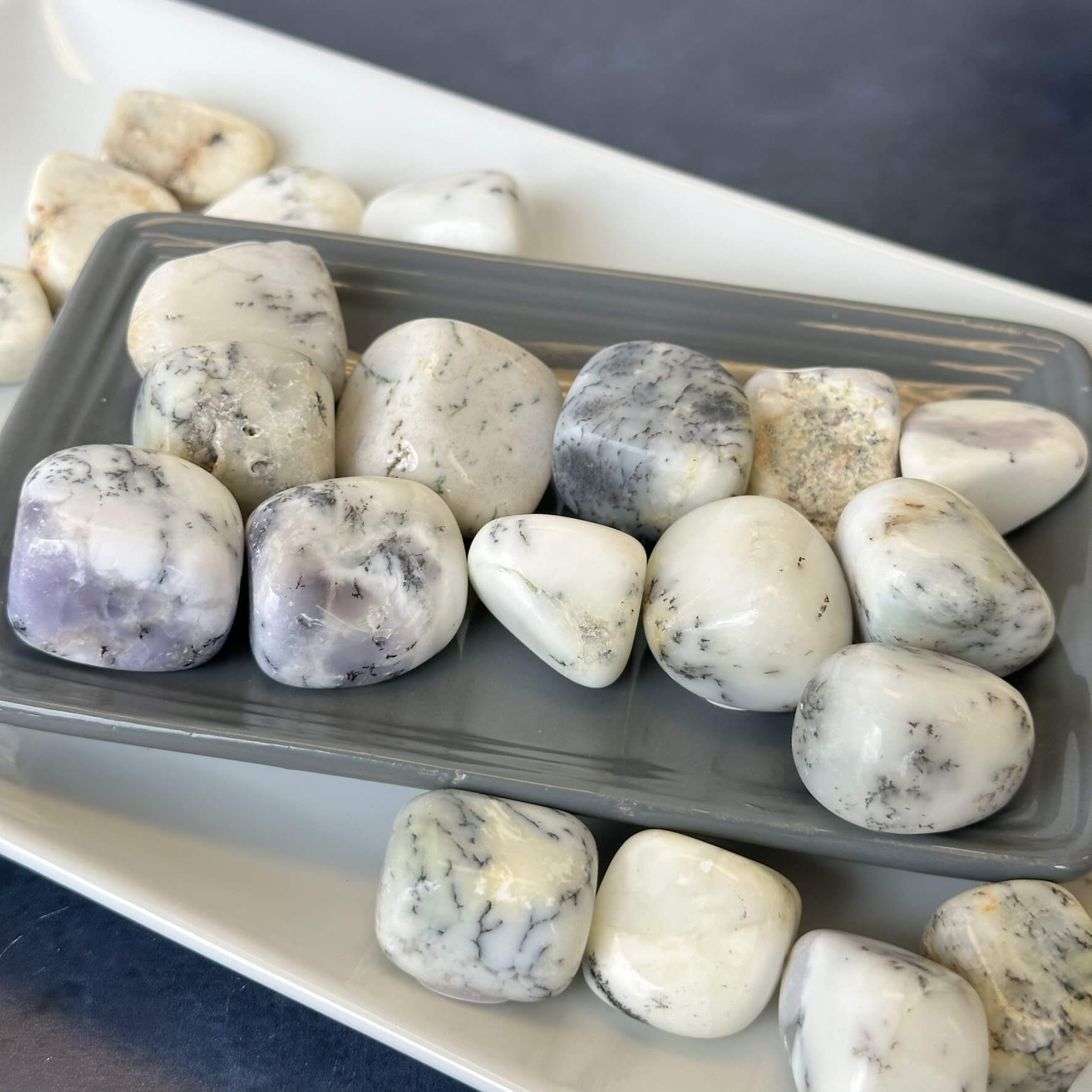
Dendritic Agate
Key Words:
Creativity · Prosperity · Good Health · Longevity · Nature · Self Esteem · Emotional Balance
Creativity · Prosperity · Good Health · Longevity · Nature · Self Esteem · Emotional Balance
Dendritic Agate is a distinctive form of chalcedony quartz known for its natural inclusions that resemble tree branches or ferns. These dark, branching patterns—called dendrites—are caused by the presence of iron or manganese and are formed when mineral-rich water penetrates microcrystalline quartz during its slow development over time. While technically a member of the agate family, Dendritic Agate often lacks the signature banding that defines traditional agates, giving it a unique, marble-like or inky appearance that stands out among silicates.


Dendritic Agate has been appreciated since ancient times for both its beauty and its energetic properties. In ancient Egypt, it was used in talismans, and in 18th-century Russia, it was considered a symbol of abundance and longevity. Its historical connection with strength and resilience made it a common amulet among travelers and farmers who relied on the natural world for survival and success.

Dendritic Agate is a powerful stone admired for both its natural beauty and its ability to promote balance, protection, and energetic alignment. Whether worn, carried, or displayed, it remains a timeless choice for those seeking harmony and vibrational strength in their daily lives.
Many people choose Dendritic Agate for its steady, grounding presence. It is thought to promote emotional balance, helping to regulate reactive patterns and instill a sense of inner peace. Because of this, it is often carried or worn as a reminder to stay composed, especially during periods of transition or emotional strain. Its supportive vibration encourages persistence and clear communication, making it helpful in both professional and personal relationships.

This stone is also known for fostering creativity and growth. Whether through problem-solving, artistic expression, or simply embracing change, it is believed to help align one’s thoughts with a broader perspective. For individuals who spend time in nature or value environmental connection, Dendritic Agate can deepen that appreciation by helping attune the body’s frequency to Earth’s natural rhythms.
Dendritic Agate is often included in restorative or supportive routines. Some choose to meditate with the stone in hand to encourage reflective thinking or to keep it nearby when working through difficult emotions. Its relatively high hardness (about 7 on the Mohs scale) makes it suitable for regular wear in jewelry or for use in home décor where steady, calming energy is desired.

It's important not to confuse Dendritic Agate with Dendritic Opal, which shares similar visual characteristics but differs in structure and hardness. Dendritic Agate is made of compact quartz crystals, while Dendritic Opal is amorphous, with a lower hardness and more delicate surface. This makes Dendritic Agate a more durable and resilient stone, both physically and energetically.

Whether used as a grounding companion or appreciated for its intricate natural designs, Dendritic Agate remains a stone of balance, growth, and resilience—quietly beautiful and steadily supportive.



